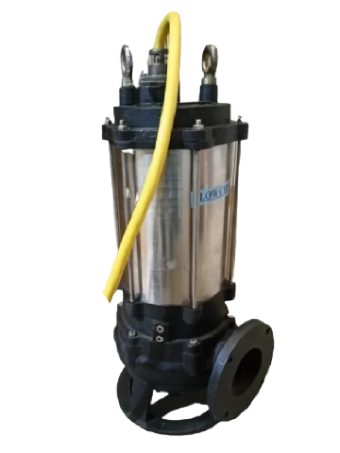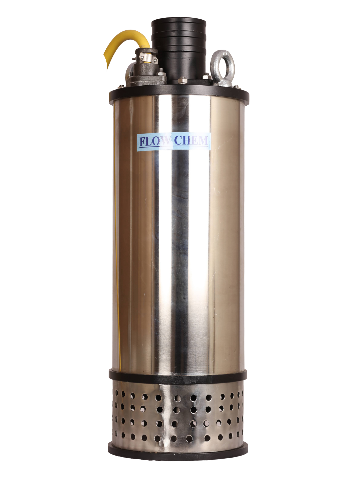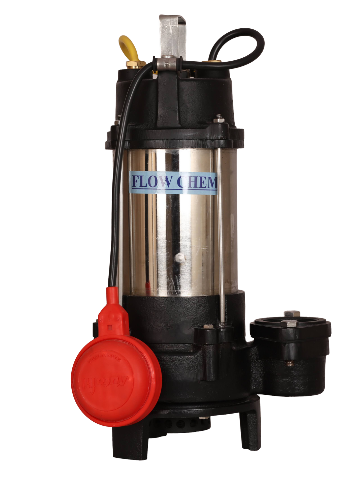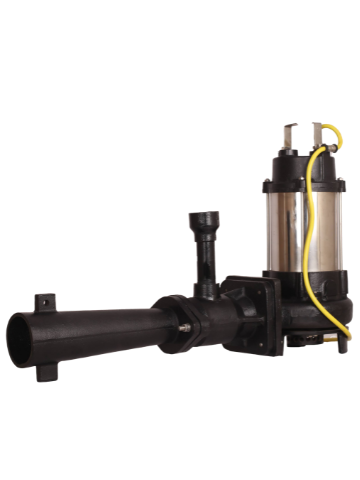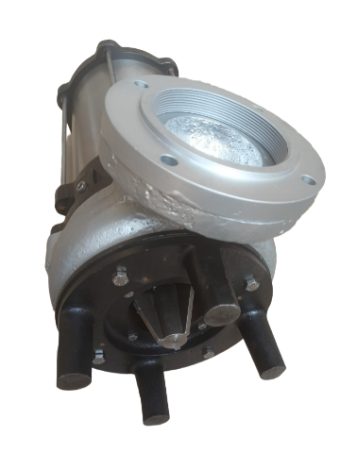The Benefits of Using Smart Sewage Pumps in Residential Properties

Modern homes require modern solutions, and this extends to sewage and wastewater management. With the advent of smart technologies, homeowners now have access to more reliable, efficient, and intelligent systems for managing their household sewage. Among these innovations, smart sewage pumps stand out as one of the most effective ways to optimize the management of waste. Whether you're looking for a submersible pump, a slurry pump, or a dewatering pump for your residential property, upgrading to smart technology can offer significant benefits.
In this blog, we will explore the various benefits of using smart sewage pumps in residential properties, compare them with traditional systems, and highlight the best smart sewage pump options available today. From energy savings and improved reliability to smarter monitoring and reduced risk of failure, smart sewage pumps are transforming how we manage wastewater at home.
What is a Smart Sewage Pump?
Before diving into the benefits, it’s essential to understand what makes a sewage pump "smart." A smart sewage pump is essentially a traditional submersible sewage pump or cutter pump sewage that’s been integrated with intelligent sensors and monitoring systems. These pumps can automatically adjust their performance, detect potential issues, and notify homeowners of problems like blockages or impending malfunctions.
These pumps combine traditional features such as strong motors and durable construction with modern technologies like IoT (Internet of Things) integration, real-time data analytics, and smartphone connectivity. Homeowners can now monitor and control their pumps remotely, ensuring optimal performance and early warning of any issues.
Key Benefits of Using Smart Sewage Pumps in Residential Properties
a. Enhanced Monitoring and Control
One of the standout benefits of smart sewage pumps is the ability to monitor and control them remotely. Traditional pumps, like a submersible pump or sewage sludge pump, usually require manual checks to ensure they are working correctly. With smart pumps, sensors collect data in real-time and can send alerts to a homeowner's smartphone.
For example, if the submersible sewage pump detects a blockage, it can immediately notify the user, who can then take action to prevent an overflow. This level of control helps avoid costly repairs and cleanup after sewage backup.
b. Improved Efficiency and Energy Savings
Smart sewage pumps are designed to optimize their performance, using real-time data to adjust power and speed based on the flow of wastewater. This results in improved energy efficiency, which can significantly reduce the cost of running the pump. Whether you're using a submersible water pump, a submersible dewatering pump, or a submersible slurry pump, smart features can help you save energy.
Pumps such as a submersible pump 1 hp or a submersible pump 1.5 hp are known for their energy efficiency. However, when these are paired with smart technologies, their ability to adjust based on demand further enhances their cost-effectiveness.
c. Increased Reliability and Reduced Risk of Failure
Traditional sewage pumps are often prone to failure if not regularly maintained. Blockages, motor issues, or electrical failures can go unnoticed until the pump stops working, leading to overflow or backups. Smart pumps, such as dewatering pump submersible systems or submersible drainage pump systems, continuously monitor their condition and alert homeowners when maintenance is needed. This predictive maintenance can prevent sudden breakdowns and keep the pump functioning optimally for longer periods.
For example, if you have a single phase submersible pump installed, smart features will monitor electrical load, flow rates, and other performance indicators, ensuring that issues are addressed before they result in costly failures.
d. Flood and Backup Prevention
Many smart sewage pumps, including the Submersible Sump Pump, are designed with advanced warning systems that can notify homeowners of potential flooding or backups. These pumps have built-in sensors that detect water levels, and when levels rise beyond a certain point, they can automatically activate, preventing floods in basements or other low-lying areas.
A Sump Pump, equipped with smart technology, can send alerts to homeowners, giving them time to react and avoid water damage. In addition to flood prevention, smart sewage pumps can shut off automatically if they detect abnormal conditions, protecting the pump and the property from further damage.
e. Integration with Smart Home Systems
Smart sewage pumps are often compatible with broader smart home systems. This means that a cutter pump or dewatering pump 1 hp can integrate with your home’s automation setup, providing seamless control and alerts through devices like Google Home or Amazon Alexa.
For instance, when connected to a home automation system, the best submersible pump can provide real-time updates on sewage levels or system performance, enabling homeowners to take immediate action or schedule maintenance more effectively.
Comparing Smart Sewage Pumps to Traditional Sewage Pumps
When comparing smart sewage pumps to traditional pumps, such as the sludge pump, slurry pump, or Drainage pump, there are several key differences in terms of cost, maintenance, and overall efficiency.
a. Cost Comparison
While the initial cost of smart sewage pumps, such as the submersible dewatering pump or submersible agitator pump, may be higher than traditional options, the long-term savings can be substantial. Smart pumps reduce energy consumption, extend the lifespan of equipment, and prevent expensive repairs caused by unexpected breakdowns. Homeowners with submersible pump 1 hp or submersible pump 1.5 hp systems can expect lower utility bills due to the energy-efficient operation.
b. Maintenance and Lifespan
Traditional pumps, like a submersible sludge pump or submersible water pump, require regular maintenance and manual inspections. In contrast, smart pumps automatically notify homeowners when maintenance is needed, reducing the need for frequent checks. As a result, smart pumps tend to have a longer lifespan, particularly those offered by leading slurry pump manufacturers or sludge pump manufacturers.
For instance, a cutter pump sewage system with smart diagnostics can last significantly longer than a conventional dewatering pump due to its ability to self-monitor and prevent overuse or overheating.
c. Environmental Impact
Smart pumps are generally more energy-efficient than traditional models, making them a more environmentally friendly option. Whether you’re using dewatering pumps for construction projects or a residential submersible drainage pump, the ability to optimize energy usage directly translates into a lower carbon footprint. Additionally, smart pumps reduce the risk of hazardous overflows, contributing to better overall wastewater management.
Common Applications for Smart Sewage Pumps
Smart sewage pumps are versatile and can be used in various residential and commercial applications. Below are some of the most common uses for these intelligent systems:
a. Residential Basements
Many homes, especially those in flood-prone areas, rely on Sump Pump to keep their basements dry. By upgrading to a smart Submersible Sump Pump, homeowners can receive early warnings about rising water levels and prevent costly flood damage.
b. Properties with Septic Tanks
For homes with septic systems, having a smart submersible sewage pump ensures that wastewater is efficiently removed and processed. These pumps are especially useful in preventing overflows or system failures, which can be harmful to the environment and expensive to repair.
c. Multi-Level Residential Buildings
In multi-level residential buildings, such as townhouses or apartments, sewage pumps play a crucial role in ensuring that wastewater flows smoothly through the plumbing system. Smart sewage pumps, like the submersible slurry pump, ensure that clogs and backups are quickly detected and addressed, keeping the building's wastewater system in optimal condition.
d. Construction Sites
On construction sites, dewatering pumps for construction are often used to remove water from excavations. Smart pumps in this context provide real-time data on water levels and flow rates, helping project managers make informed decisions and keep construction on schedule.
Future Trends and Innovations in Smart Sewage Technology
The future of smart sewage pumps looks promising, with several advancements already making waves in the industry. Here are a few trends that are shaping the future of residential and commercial wastewater management:
a. IoT and AI Advancements
The integration of IoT and AI into sewage systems will only continue to grow, providing more precise diagnostics and predictive capabilities. For example, a submersible agitator pump or slurry pump equipped with AI can optimize its performance based on the specific characteristics of the wastewater being processed, ensuring greater efficiency.
b. Increased Adoption in Residential Settings
As smart sewage technology becomes more affordable, it’s likely that more homeowners will adopt these systems. Whether it’s a single phase submersible pump or a more complex submersible drainage pump, the demand for smarter, more efficient solutions will drive further innovations and improvements in this space.
c. Collaboration Between Manufacturers
Many of the leading dewatering pump manufacturers and slurry pump manufacturers are already collaborating with tech companies to create smarter and more reliable products. This collaboration will lead to better integration between pumps and home automation systems, giving homeowners more control over their wastewater management than ever before.
Conclusion
Smart sewage pumps offer numerous advantages for homeowners looking to improve the efficiency, reliability, and safety of their wastewater management systems. Whether you need a submersible pump, dewatering pump, or submersible slurry pump, investing in smart technology can provide significant long-term benefits.
By combining traditional sewage pump technology with modern sensors and real-time monitoring, smart sewage pumps are revolutionizing residential wastewater management. With improved efficiency, better control, and reduced risk of failure, these systems offer homeowners peace of mind and an enhanced ability to manage their sewage systems effectively.
If you're looking for the best submersible pump or smart sewage system for your home, now is the time to upgrade and enjoy the benefits of this cutting-edge technology.

